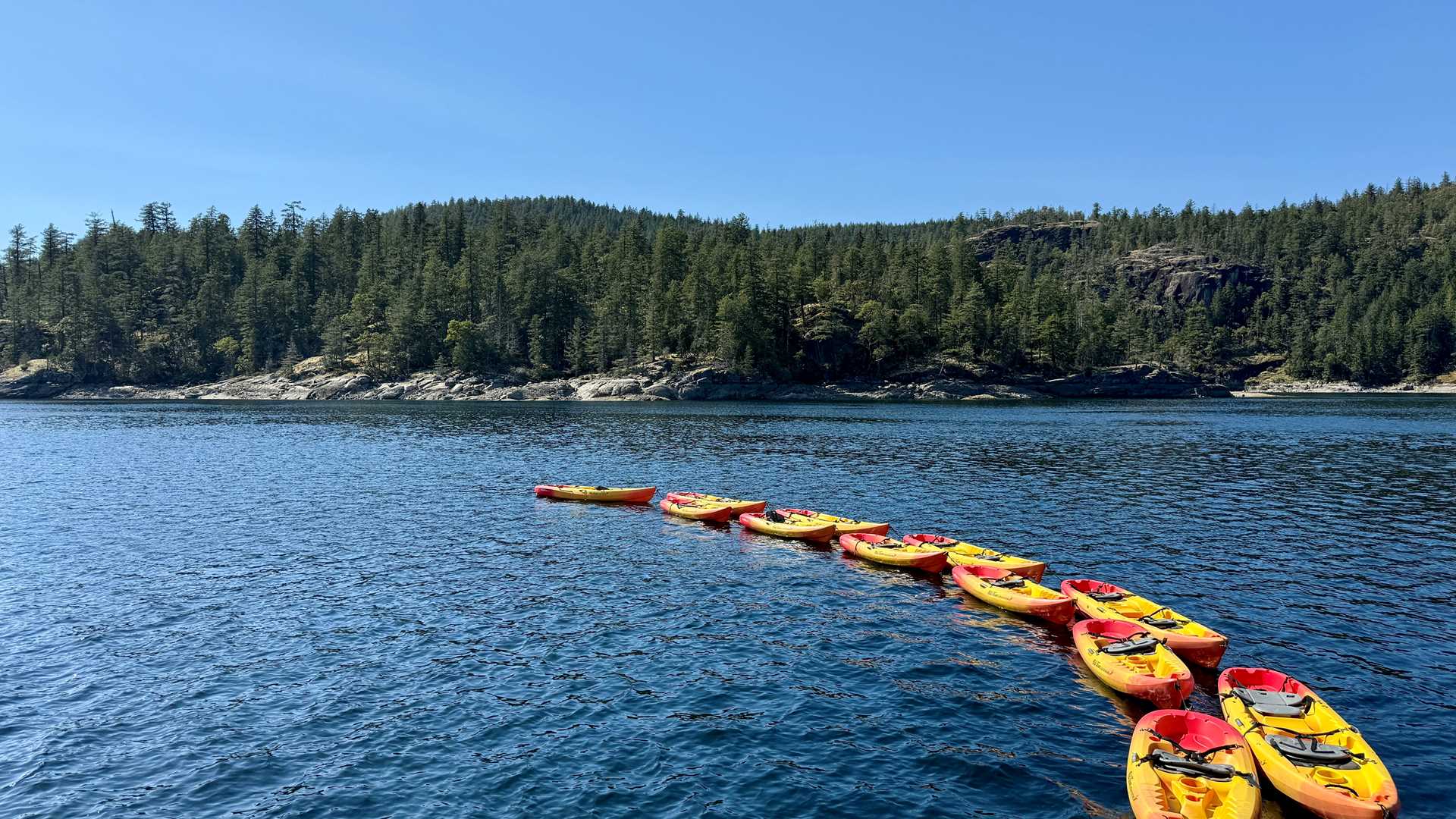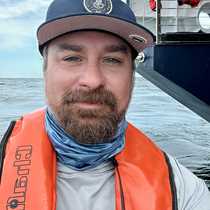Last night we departed the city lights of Vancouver as we start our northbound expedition. Sailing through the Salish Sea, we awoke surrounded by the mountains and trees of British Columbia. By afternoon, National Geographic Sea Lion dropped anchor at Desolation Sound Marine Park. Desolation Sound lies within the traditional territories of the Tla’amin, Homalco, and Klahoose First Nations who have lived in and stewarded these lands and waters for thousands of years. The sun and perfect weather beckoned us to explore, so we put down our kayaks and Zodiacs. With bald eagles overhead, sea lions in the water, and green forest surrounding us, it was a picturesque introduction to coastal British Columbia.
- Daily Expedition Reports
- 16 Apr 2025
Desolation Sound Marine Park, British Columbia, 4/16/2025, National Geographic Sea Lion
- Aboard the National Geographic Sea Lion
- Alaska
Alex Joseph, Naturalist/Certified Photo Instructor
Born and raised in Alabama, Alex's connection to nature took shape as a child living in a state park and then in his formative years spent in Gulf Shores, AL. Where white sandy beaches meet the pine forest of the Southeast.
Read MoreShare Report
Voyage to Alaska, British Columbia and Haida Gwaii
VIEW ITINERARYRelated Reports
5/11/2025
Read
National Geographic Sea Bird
Glacier Bay National Park
We had a phenomenal day at Glacier Bay National Park. The sun was out, as was the wildlife. The bow was the place to be. Please enjoy the dialogue of the day from the bow: Ah, Lovely Sunrise. Dall’s porpoise! Killer whales! Oo, swans! Calving center! Bald eagle on ice. Brown bear, That’s a big one. Bald eagle in nest. I wish someone would find me a marmot. Marmot at 10! Where? Do you see that crack in the rock? To the left you’ll see a tree. Now go below the tree to the round rock. 6 goats plus bonus outcast goat. Low goats on ledge, wedged in nicely. Goats, goats everywhere, and a marmot here or there. Two puffins. Nice beak action. It’s like “I Spy” out here. Low goat at 11. Oh, really low goat. Oh, yea that’s a fella. Goats looking right at us, folks, good goat face. Oh, and whale spots at 1. Oh boy, I’m exhausted. That’s ok, take it one goat at a time. There’s a spout off the point. Classic humpback. Oh, glaucous winged gulls nesting at 2. And otters! Fly by puffins! Porpoising harbor porpoise! Needless to say, we had a good time. Photo by Shannon Malone
5/10/2025
Read
National Geographic Sea Bird
Tracy Arm
As we continued our way north through Alaska, we had a favorite stop of mine in Tracy Arm-Fords Terror Wilderness. We had a rainy day, which I enjoy because we can see at higher elevations since the rain turns to snow and, in turn, the snow feeds the absorption zone of the Sawyer Glaciers. We went out in the Zodiacs and navigated around the icebergs and bergy bits, even collecting a piece for the ice melt-off challenge. Once underway out of Tracy Arm, we saw some humpback whales. One whale had an entanglement of line on its fluke. The line was causing an obvious cut to the marine mammal. The correct authorities were notified about the condition of the whale and location of the sighting. Hopefully the whale will be assisted soon and the entanglement removed. Several other humpbacks were seen shortly after, luckily no entanglements on these. They were demonstrating surface feeding behavior, with one lunge feeding and the other making bubbles to catch its prey.







